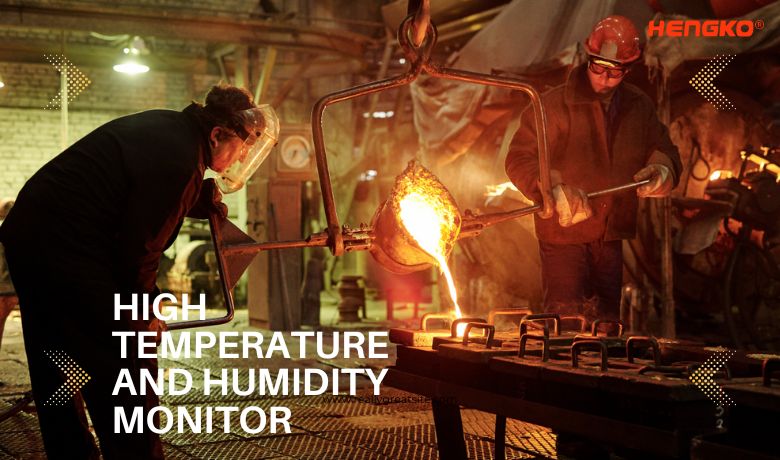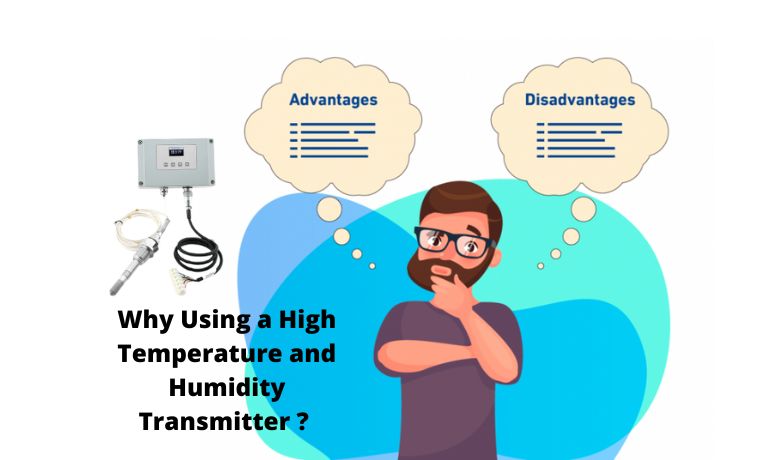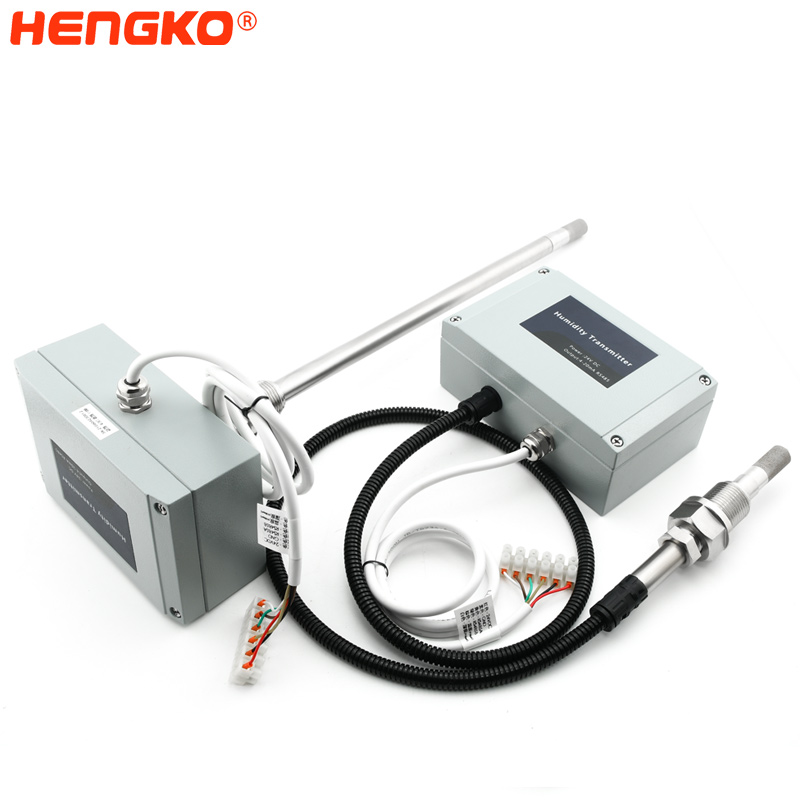What is High Temperature and Humidity Transmitter?

High Temperature and Humidity Transmitter: A Comprehensive Guide
Temperature and humidity are two of the most commonly measured environmental parameters in various industries and applications. Accurate measurement of these factors is crucial for maintaining optimal conditions in various settings, including manufacturing plants, warehouses, greenhouses, and weather stations, to name just a few.
A high temperature and humidity transmitter is a device that is specifically designed to measure and transmit temperature and humidity data over long distances. These transmitters are equipped with sensors that can accurately detect temperature and humidity changes and electronic components that process and transmit the data to a remote monitoring system.
In this blog post, we will delve into the inner workings of a high temperature and humidity transmitter, explore the available types, and discuss the advantages and disadvantages of using this device. We will also cover the importance of proper maintenance and calibration to ensure accurate measurement and reliable performance.
How a High Temperature and Humidity Transmitter Works
At the core of a high temperature and humidity transmitter is a sensor capable of detecting temperature and humidity changes. Several different types of sensors can be used, including thermistors, thermocouples, and resistance temperature detectors (RTDs) for temperature and capacitive, resistive, and optical sensors for humidity measurement.
The sensor is connected to electronic components that process the sensor signal and convert it into a format that can be transmitted to a remote monitoring system. It may involve amplifying the sensor signal, filtering the noise, and converting it into a digital format using an analog-to-digital converter (ADC).
The processed signal is then transmitted to the remote monitoring system using a wired or wireless transmission method. Wired transmitters use a physical connection, such as a cable or wire, to transmit the data. In contrast, wireless transmitters use radio frequency (RF) or other types of wireless technology to transmit data over the air.
Types of High Temperature and Humidity Transmitters
High temperature and humidity transmitters come in various forms, each with its own features and capabilities. Some of the key distinctions between different types of transmitters include the following:
1. Wired vs. Wireless:
As mentioned earlier, high-temperature and humidity transmitters can be wired or wireless, depending on the transmission method. Wired transmitters are generally more reliable but may be less flexible and require more installation effort. Wireless transmitters offer greater flexibility and ease of installation, but they may be subject to interference and signal loss.
2. Analog vs. Digital:
High temperature and humidity transmitters can also be either analog or digital, depending on the type of signal processing used. Analog transmitters process the sensor signal using analog electronics and transmit the data as an analog voltage or current. Digital transmitters, on the other hand, convert the sensor signal into a digital format using an ADC and transmit the data as a digital signal. Digital transmitters offer higher accuracy and the ability to transmit data over longer distances, but they may be more complex and expensive.
3. Specialized Transmitters:
There are also specialized high-temperature and humidity transmitters designed for extreme temperature and humidity conditions. These transmitters often have advanced sensors and other components that can withstand extreme temperatures and humidity. Examples include transmitters for high-temperature environments, such as foundries and furnaces, and transmitters for high-humidity environments, such as greenhouses and tropical climates.
Temperature and humidity transmitter is widely used in the industrial filed. Various temperature and humidity sensors are appeared according to different measurement demand. HENGKO HT400-H141 temperature and humidity sensor is specialized in strict industrial application with Switzerland's imported humidity measuring element. It has the advantage of accurately measuring, adapts to a wide temperature range, excellent chemical pollution resistance, steady working and long service time, etc. 2-pin temperature and humidity 4-20mA current signal output.
The chip of HT400 has excellent temperature resistance and can works under the 200 ℃ for a long time. Such as industrial field measurement, petrochemical gas emission detection, thermoelectric gas emission detection, tobacco industry, drying box, environmental test box, furnace, high temperature oven, high temperature pipe and chimney environment of high temperature gas temperature and humidity collection.
High temperature and humidity sensor(duct mounted temperature and humidity sensor) is divided into split-type and integral type. The extension tube makes it suitable for the duct, chimney, confined environment and other crawl spaces.
The measuring error and drift will produce when you choose the other high temperature and humidity sensor. HENGKO high temperature and humidity series sensor have excellent chemical contamination ability and can be worked steady in various complex chemical contamination for a long time. With RS485 digital interface with real-time communication, accuraci calibration, multi monitor, etc
Advantages and Disadvantages of Using a High Temperature and Humidity Transmitter
There are several advantages to using a high-temperature and humidity transmitter:
1. Accurate Measurement:
High temperature and humidity transmitters are designed to provide accurate measurement Maintenance and Calibration of a High Temperature and Humidity Transmitter Proper maintenance and calibration are essential for ensuring accurate measurement and reliable performance of a high temperature and humidity transmitter. Here are some key steps to follow:
2. Keep the Transmitter Clean:
Dust and debris can accumulate on the sensor and other components of the transmitter, affecting its accuracy and performance. Regular cleaning of the transmitter can help to prevent this from happening.
3. Check and Replace the Battery:
If the transmitter is a wireless model, it will be powered by a battery. Regularly check the battery level and replace it when needed to ensure the transmitter continues functioning properly.
4. Perform Periodic Calibrations:
High temperature and humidity transmitters should be calibrated periodically to ensure accuracy. Calibration involves comparing the readings of the transmitter to a known reference value and adjusting the transmitter accordingly. It can be done manually, using a calibration tool, or automatically, using a built-in self-calibration feature.

With many years experiences in temperature and humidity measurement industry, HENGKO
has certified by SGS, CE, IOS9001, TUV Rheinland and so on.
We have various Temperature and humidity sensor, temperature and humidity probe, temperature
and humidity probe shell, temperature and humidity calibration instrument, temperature and humidity
recorder, dew point transmitter, to meet your various industrial environmental measurement needs
and standards. HENGKO always adheres to the customer demand as the center, all-out service attitude,
to help customers expand greater competitive advantage, help customers become a long-term core
brand in the industry.
Are you looking for a high temperature and humidity transmitter that you can rely on for accurate
measurement and reliable performance? Look no further than HENGKO! Our team of experts has carefully
selected a range of transmitters that are suitable for a variety of industries and applications.
Whether you need a wired or wireless model, an analog or digital transmitter, or a specialized
device for extreme conditions,
we have you covered. Contact us at ka@hengko.com with any questions or inquiries. Our team will be
happy to help you find the perfect transmitter to meet your needs. Don't wait any longer, reach out to us today!

